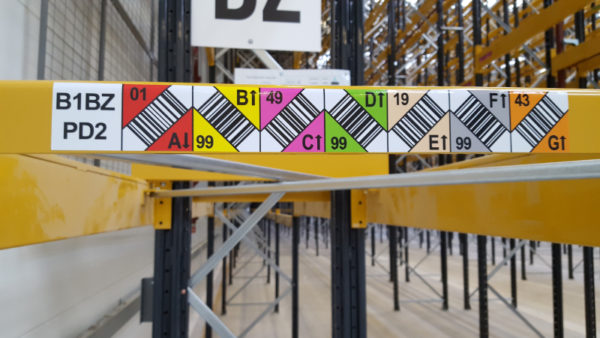MAN Diesel & Turbo is a world market leader in the supply of large Diesel and Turbo engines for use in ships and power stations. The company employs more than 12,500 people in over 150 countries – covering four Strategic Business Units: Engines & Marine Systems, Power Plants, Turbomachinery and After Sales. A spirit of innovation continues to characterise the company today – making MAN Diesel & Turbo a technological leader in this sector. From entire machine trains to single engine units and components, the huge range of products and services supplied by MAN Diesel & Turbo to their customers and subsidiaries worldwide presents unique and diverse distribution challenges.
Introduction of mobile data capture in the warehouse
To accommodate such a complex logistics flow, processes have to be continuously verified and modified. Their Oberhausen Distribution Centre in North West Germany, covers an area in excess of 20,000 square metres, holding a huge range of items from small parts to very heavy duty units. The warehouse has 9,000 stock locations, 4,066 racking positions, bulk storage lanes, as well as a dedicated, automated small-parts-warehouse. In designing their new mobile data capture system, all storage and distribution processes were reviewed and optimised. Warehouse sections were arranged into new working units and all stock locations were given a unique identity code. To meet the demanding specification of the project, key requirements for the labelling were identified:
• Flexibility of design to suit different racking configurations, of various heights, profiles and surfaces
• Able to withstand variations in seasonal temperatures
• Resistant to oil, humidity and cooling lubricants
• Able to be wiped clean with detergents
• Bespoke size options for different applications
• Resistant to mechanical damage in a busy warehouse environment
And the winner was…
The digitally printed multilevel labels from inotec fulfilled all requirements. For the past year, they have been used throughout the operation enabling forklift drivers to accurately scan and capture location and load data at ground level. Incorporating inotec’s oblique barcode technology, scan speed and accuracy were further enhanced, the angled barcodes ensuring only the correct barcode was scanned. MAN Diesel & Turbo Operatives and Foremen were involved at each stage of the process, having input into the design and layout of the finished labels and choosing the reading devices. This created added acceptance for the mobile data capture technology and ownership of the project among staff.
« Our employees are the real experts at this and know best which characteristics have to be fulfilled: IP class of the scanner, the size of push-buttons, design and size of the device. Before setting the order of the labels we have tested the different labels with the employees. The staff had the possibility to decide about font size, colours and layout», explained Malte Sietz, Logistics Manager, in charge of planning and logistics at MAN. The involvement of the staff during the decision-making process has contributed to the success of this project and as a result, there have been no problems or issues with the
explained Malte Sietz, Logistics Manager, in charge of planning and logistics at MAN. The involvement of the staff during the decision-making process has contributed to the success of this project and as a result, there have been no problems or issues with the use of the scanners.
Tested and approved by experts
For Malte Sietz, the advantages of the multi-level labels are clear: « This kind of labelling is the ideal solution if the forklift driver has to put goods in one rack on different levels. If every stocking position would receive a single user label, the driver would have to drive back or even get off the truck just to scan one of the above stocking positions. Both alternatives are time killers in this process. The multilevel labels avoid this problem because the driver can scan the barcode directly.» he said. Using inotec’s state of the art digital printing technology and bespoke label designs and formats, Malte described the other key advantages: « To have the possibility of selecting any colour and style, makes these labels more attractive to us and of course the colours help the employee to find the right
« To have the possibility of selecting any colour and style makes these labels more attractive to us and of course the colours help the employee to find the right barcode for scanning. When creating the layout, we decided that each height should get a different colour and that the barcode is printed oblique. This visual support contributes to a quick processing time and a reduction of human errors. »

